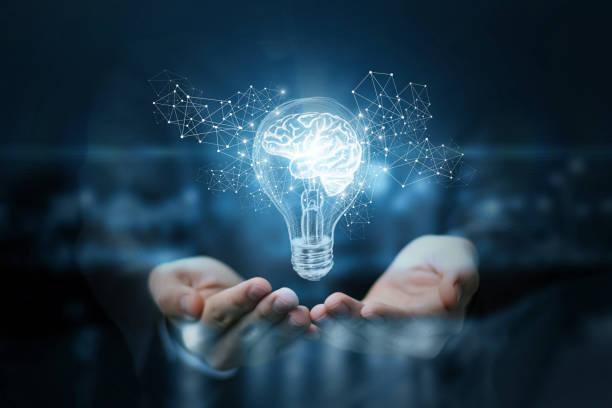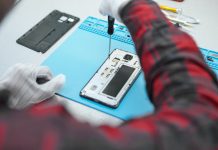Anyone who lives in a civilized western country understands that technological advancements are responsible for guiding our society forward, and for shaping our understanding of life and how we choose to live.
But truth be told, a vast part of our technology is found in the obscure but massive space which we refer to as the Internet of Things (IoT).
Concerning the IoT, we have everything from wireless toasters to drones that can be controlled via a smartphone app, and in between we can find everything from the senseless to the useful. So what does the IoT have to do with changing the world. Well, in a nutshell: Everything.
The Internet of Things is a space where the impossible becomes possible, and this is largely fueled by need and imagination. And you’d be surprised what some inventors and software developers have come up with just in the last decade.
In this guide, we’ll upack the IoT and explore the multitude of new advancements that are sure to change major dynamics of how we all live life and communicate in the not so distant future.
What Exactly is the IoT?
The Internet of Things (IoT) refers to the idea of device connectivity through the Internet. To put it differently, this is simply the linking of one product with another, and the linking is done through the Internet.
The IoT is essentially the idea that any device that can be made wireless can potentially be made to communicate with other devices within a home. Additionally, this process also provides users with data regarding the communication of devices, and relays of functional data as well.
This might seem like a much more complex leap forward than simply supercharging your Firestick so you can stream faster. In fact, the IoT goes far beyond simple streaming devices, and some of the applications are more advanced than most people realize.
The IoT in Business
The modern business world is constantly upgrading technology to make doing business more efficient and cost-effective. And the IoT has a lot to do with how a business is run today.
Inventory
For example, if you own a business and you’re looking to speed up your inventory and tracking process, you most likely will need a team of humans to do this work. Well, not so fast.
With the IoT engaged in the business world, through the use of interconnected devices, you can control and track your inventory while mitigating human error. And this simply means that there will be less human involvement in inventory processes and tracking tasks.
Data Mining
Data mining, or data collection, is simply the process of collecting and analyzing business data of your own organization and that of competitors as well. And this can include a range of data, from marketing analysis to sales reports.
With IoT devices and software interconnected across your network, you can allow the software to crunch the numbers and keep up with the analytics much more efficiently than with a team of data analysts.
Productivity
Business is all about productivity. Basically, if you don’t have an efficiency of productivity, you’re not going to be in business for long.
The IoT takes productivity up a notch. With sensors and devices to communicate production rates, along with devices in place for safety compliance, productivity no longer will fall on a project manager’s plate.
Instead of a team of project managers and supervisors, the productivity of a sector will be monitored remotely, reducing the need for extra employees who may or may not stay on task themselves.
Smart Cities
We’ve already begun to see the implementation of IoT devices across major urban areas such as New York City, Los Angeles, Las Vegas, Houston, and many others. And this has a lot of city planners rethinking their entire infrastructure dynamics.
The IoT has already brought real-time facial recognition software online with camera systems that can be accessed throughout major cities from any location. Turnpike systems relay information on thousands of cars that pass through camera checkpoints per day. And this software is able to read every license plate and find addresses and registration information.
Future projections for “smart cities” have applications that can link devices in homes and vehicles, even having vehicle-to-vehicle data exchange. This information can be relayed to police networks, fire departments, planning and zoning officials, or to any other system.
Massive Growth of Artificial Intelligence
As the IoT begins invading all of our devices, we’ll also see a huge impact made by advancements in Artificial Intelligence (AI) and machine learning.
With AI, you can expect to see grocery stores without clerks or cashiers, fast food restaurants that are completely automated, and self-driving vehicles that will eventually be transporting our goods and replacing city transit drivers.
AI is also going to make a huge impact in the healthcare industry, with operations being performed remotely, and with diagnostic data being relayed from a smartphone to a physician that can include blood pressure readings, blood oxygen levels, and much more.
The need for AI in just about every sector is being projected, and though many humans will be replaced due to this sort of progress, other jobs requiring technical backgrounds will surge into high demand.
The Need for Skilled Employees
When we have a functioning 5G network across the country, the IoT is projected to become much more advanced, and much more complex. As such, the need for skilled individuals to work on these systems, troubleshoot issues, and monitor new devices will grow tremendously.
While we currently have a high demand for IT professionals, the IoT will only enhance the need for those skilled in software development, app development, and for technicians who can diagnose and fix any potential problems within these systems.
There may come a day that every electronic product you buy, or even products as simple as a keychain, will have the ability to connect to the Internet. When this happens, all devices will potentially be able to communicate with one another in some way, and the need for those who understand this communication process will become critical.
V2X
V2X or Vehicle to Everything technology is just a bi-product of the IoT. This process has already begun to get underway with self-driving trucks and cars like those manufactured by Tesla.
But the future of V2X is pretty amazing, nearly the stuff of science-fiction.
If you think about it, if you’ve purchased a vehicle manufactured within the last five years, you have access to GPS technology, USB connections, touchscreen monitors, and onboard camera systems. Just imagine that the next step is going to have your vehicle hooked up to cloud-based technology.
In fact, vehicles will ultimately be able to communicate with one another, relay information for safety compliance, and for many other purposes. Even further, a vehicle can potentially communicate with road signs retrofitted with wireless devices.
The tech might seem invasive, but many experts agree that V2X can greatly minimize traffic fatalities and criminal activity.
Greater Needs for Cybersecurity
If you were paying attention over the last 18 months, there has been much discussion over the hacking attempts made on our infrastructure here in the United States.
In May of 2021, the Colonial Pipeline system originating in Houston suffered a massive ransomware attack that affected all networks and subsequently shut down the pipeline, halting the fuel transport for millions of Americans.
In the future, with more and more interconnected devices, there will be a massive need for cybersecurity infrastructure across the country. Because as our technology becomes more advanced, cyber threats follow suit.
Going Forward with the IoT
The Internet of Things is here to stay. In fact, it’s been here for quite a while. But this is what will ultimately change the way we live our lives, and how we communicate.
Chances are, for all of the interconnectedness which the IoT is able to bring, it will likely take several decades before we begin seeing this technology across the country as a whole. Currently, there are still areas of the United States which don’t have access to the Internet at all. And some areas where it’s nearly impossible to get a consistent signal.
But as the 5G network grows, our tech will be much more able to be integrated into just about anything we see fit.
There may come a time where you can literally talk to your home or your car from an overseas flight. The possibilities are entirely up to the imagination when it comes to the IoT.
And while there is some reason for concern due to the invasive nature of wireless technology, this is actually something that we already live with on a daily basis. In fact, your smartphone is probably listening to you right now.
But there is no current need to be alarmed at the pace of technology. Just be certain, the devices we have now will pale in comparison to those we have in the future.






